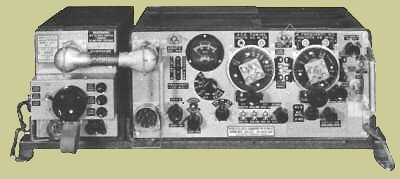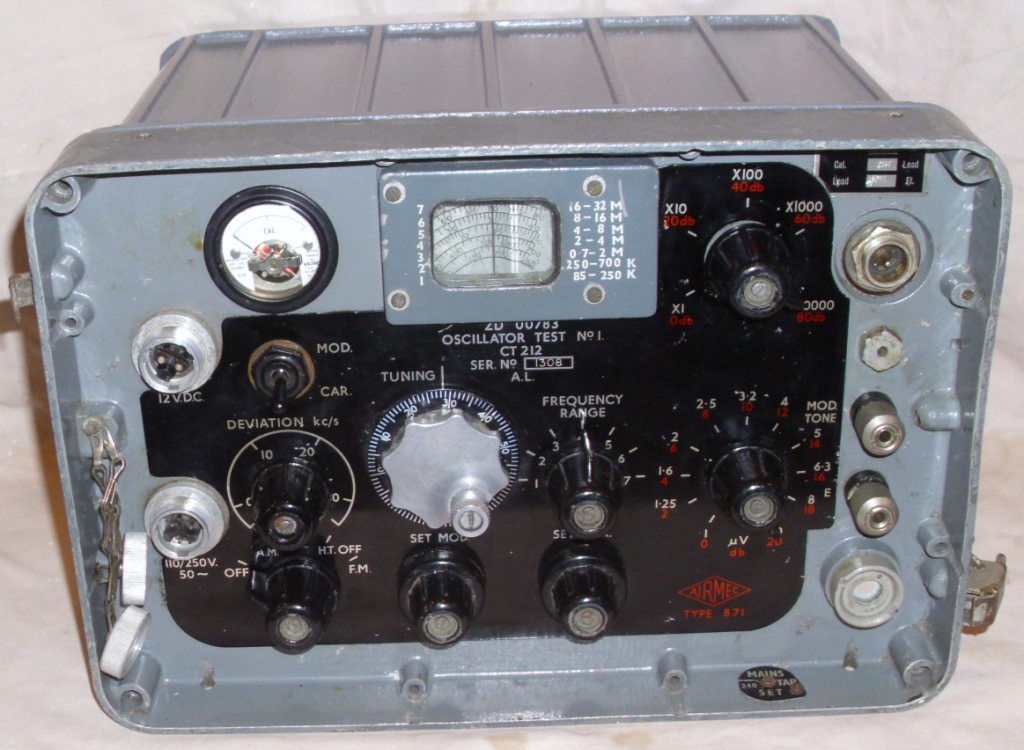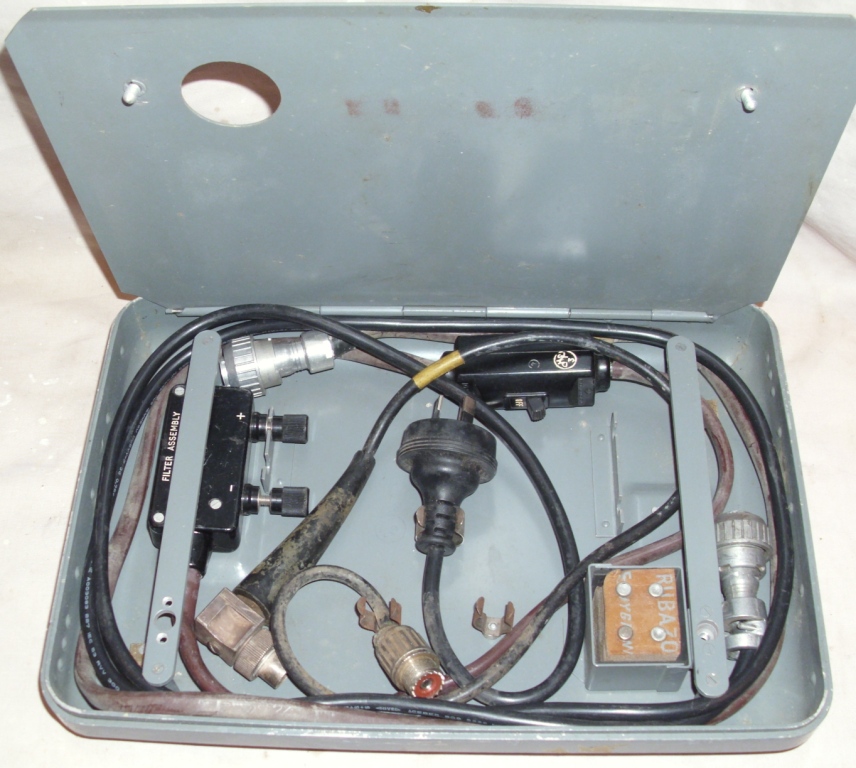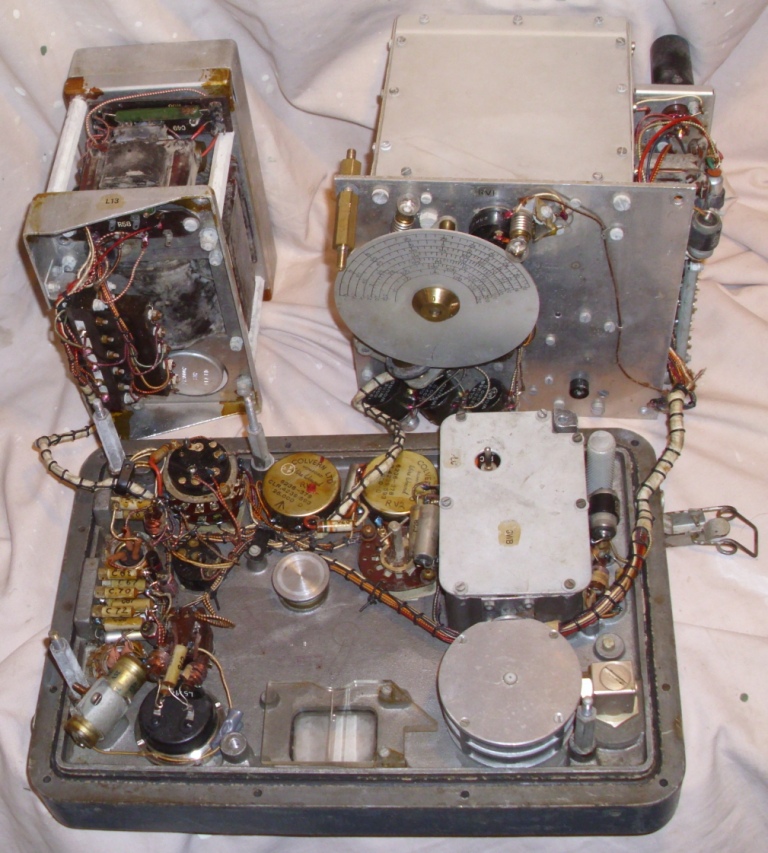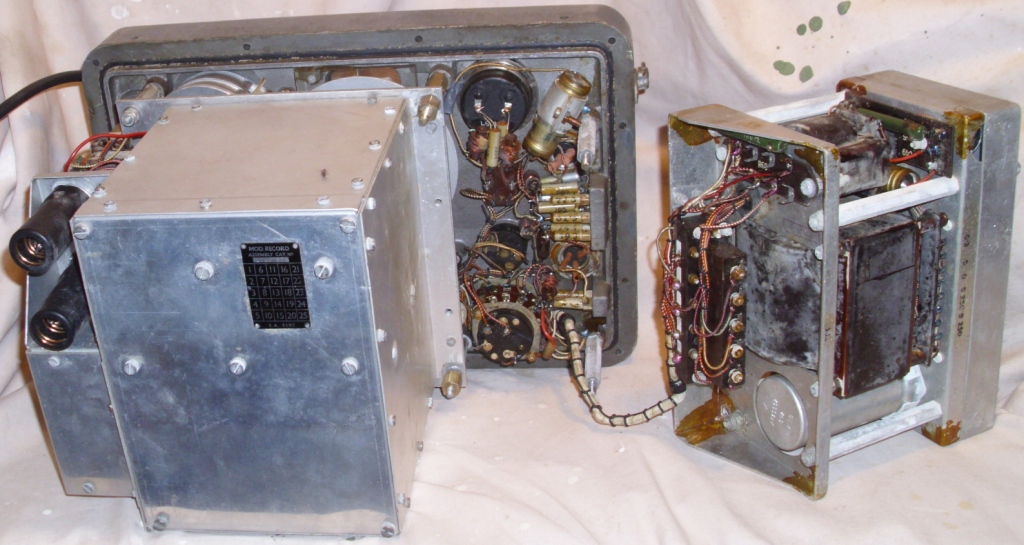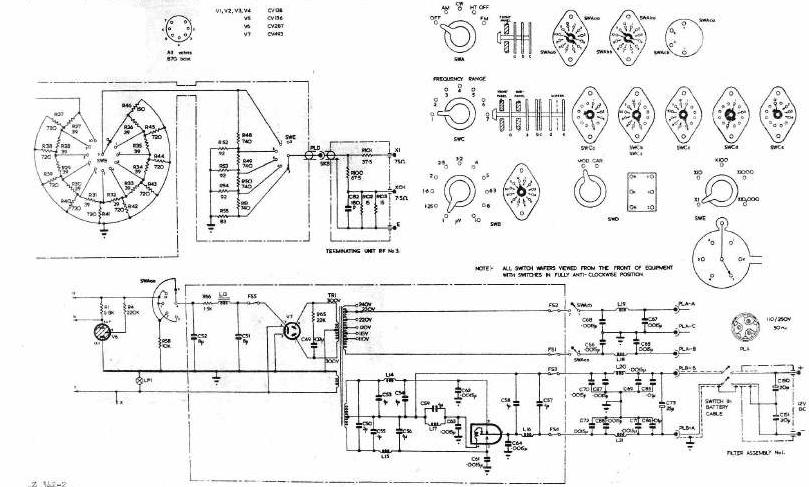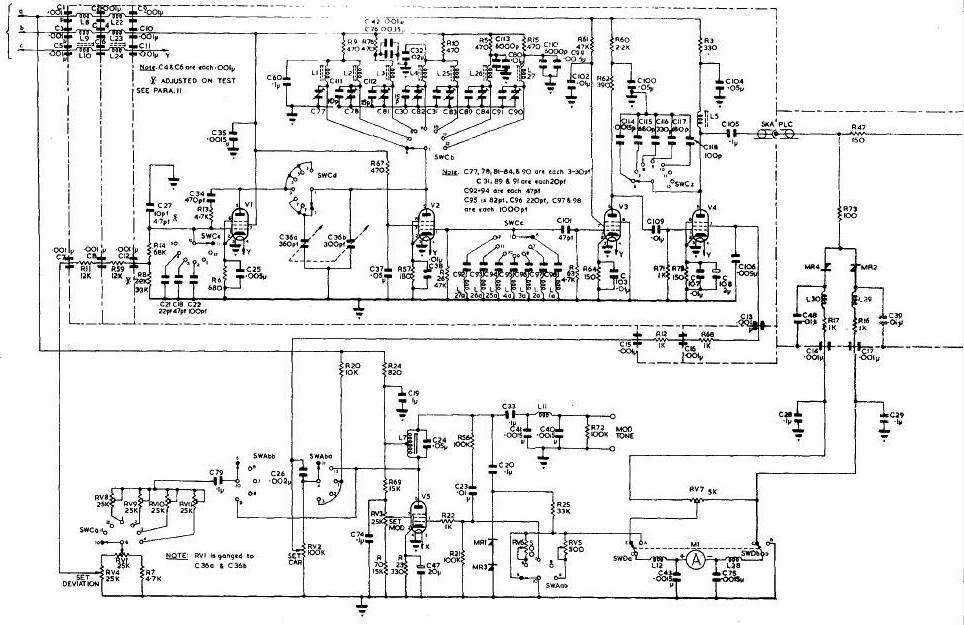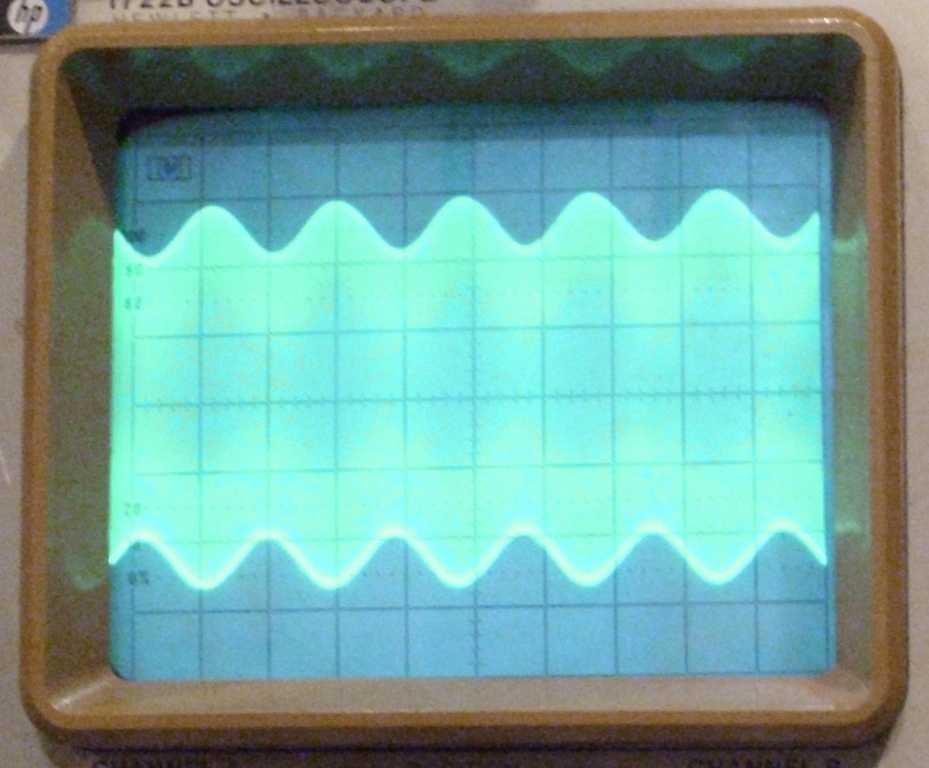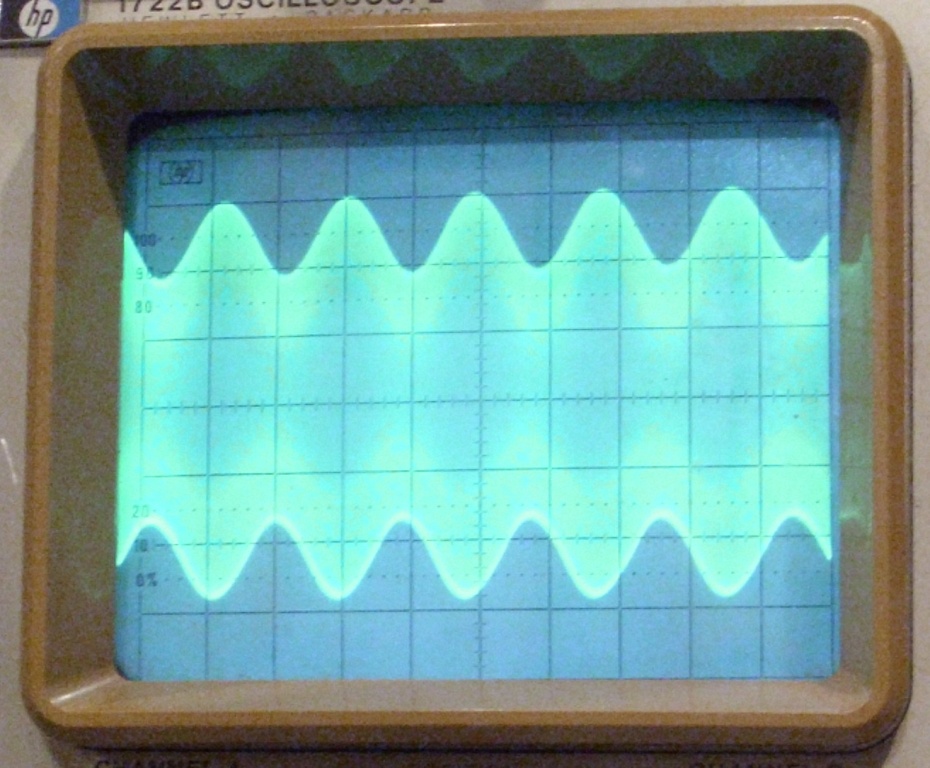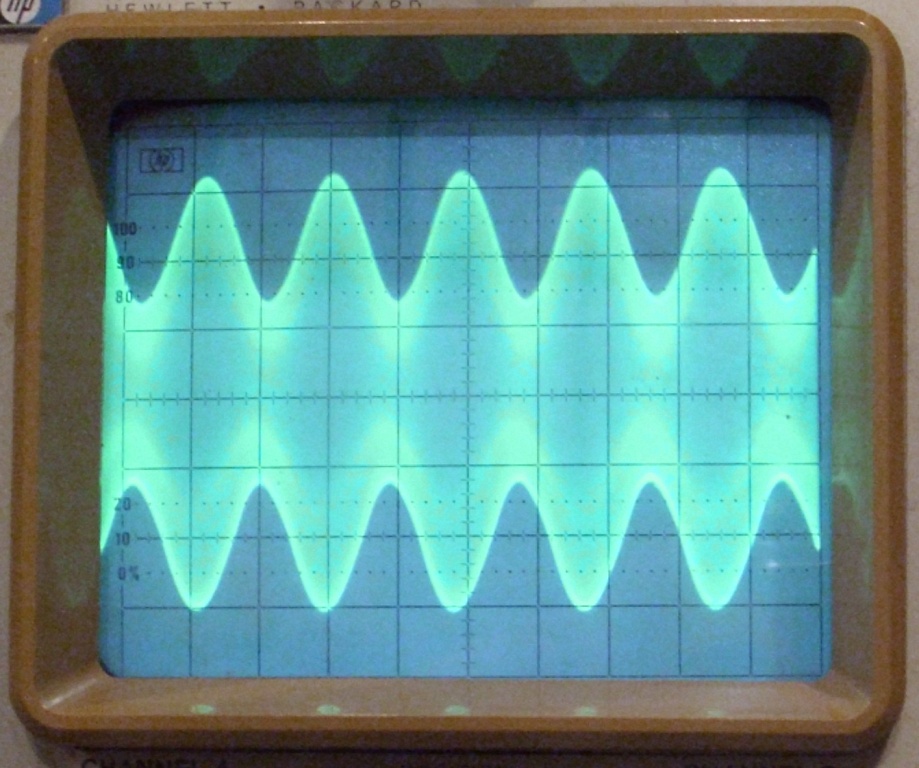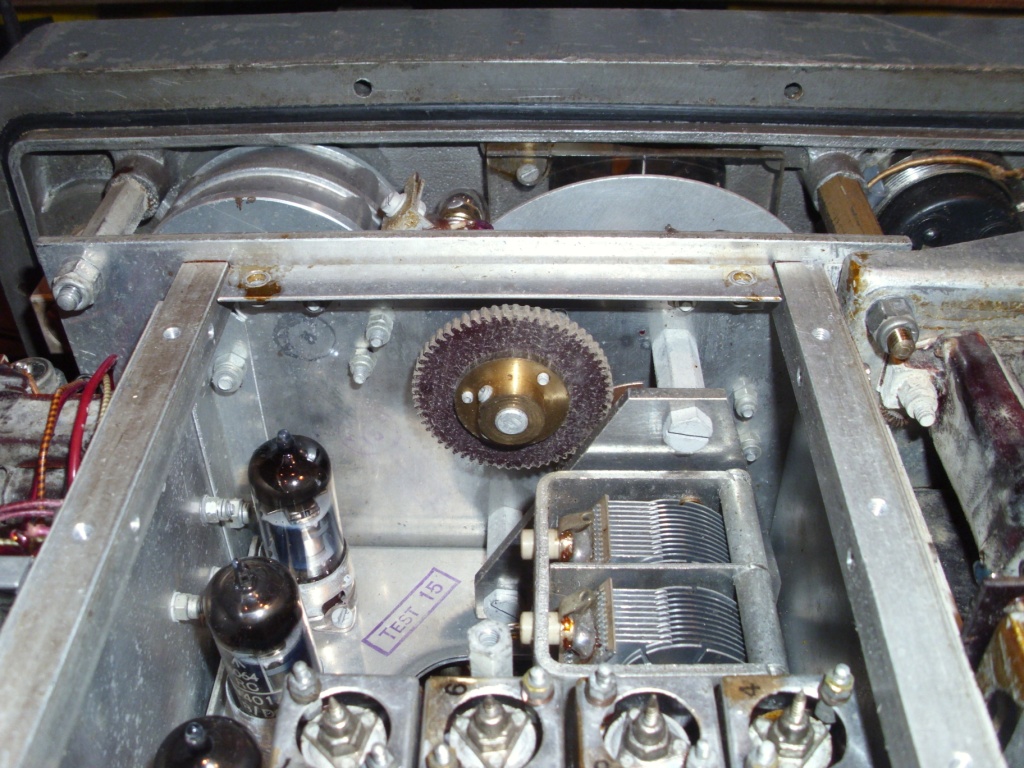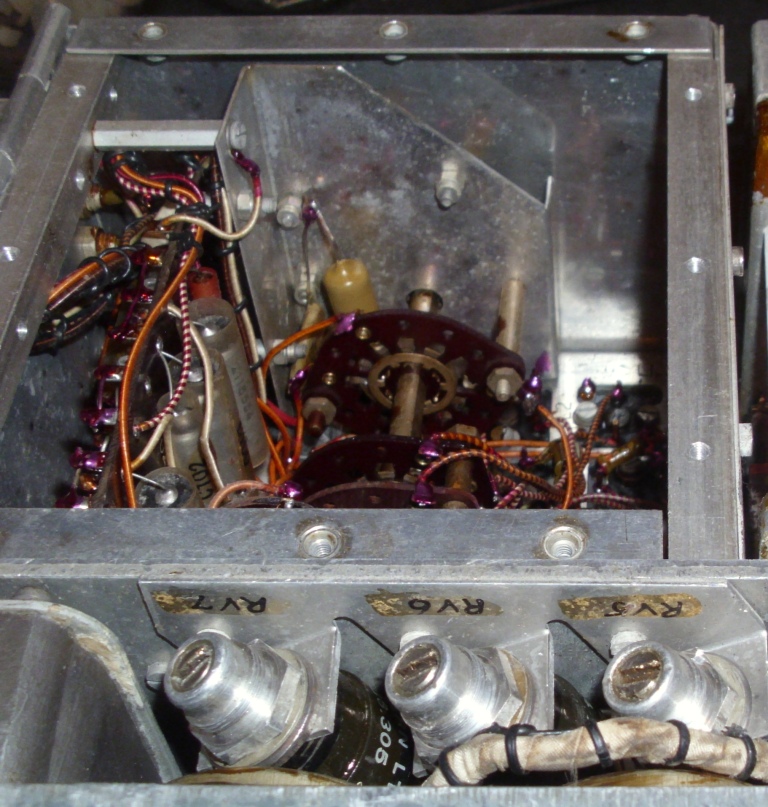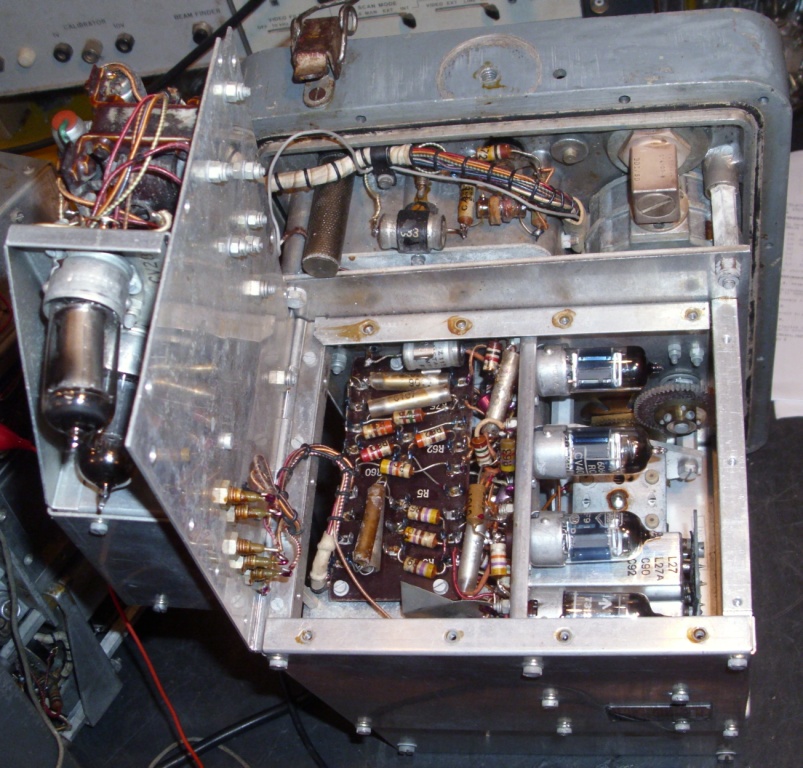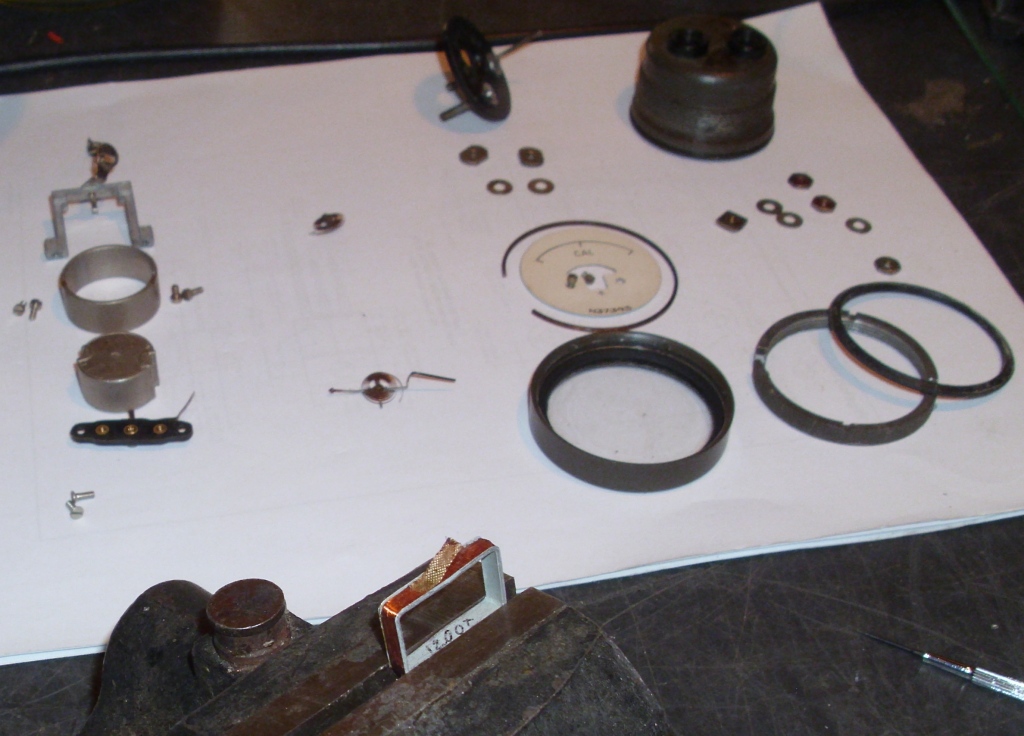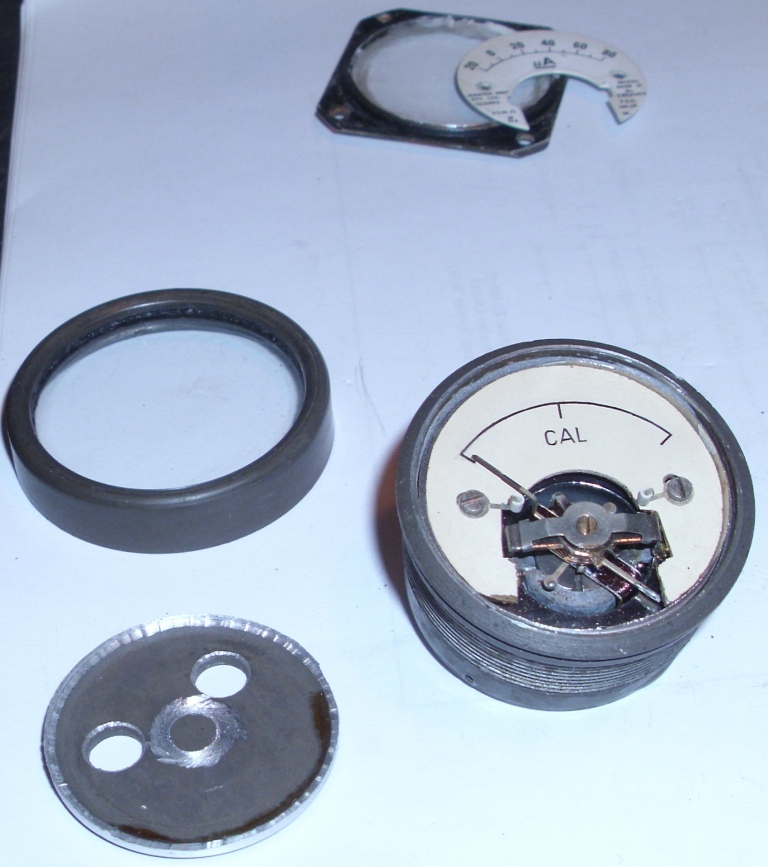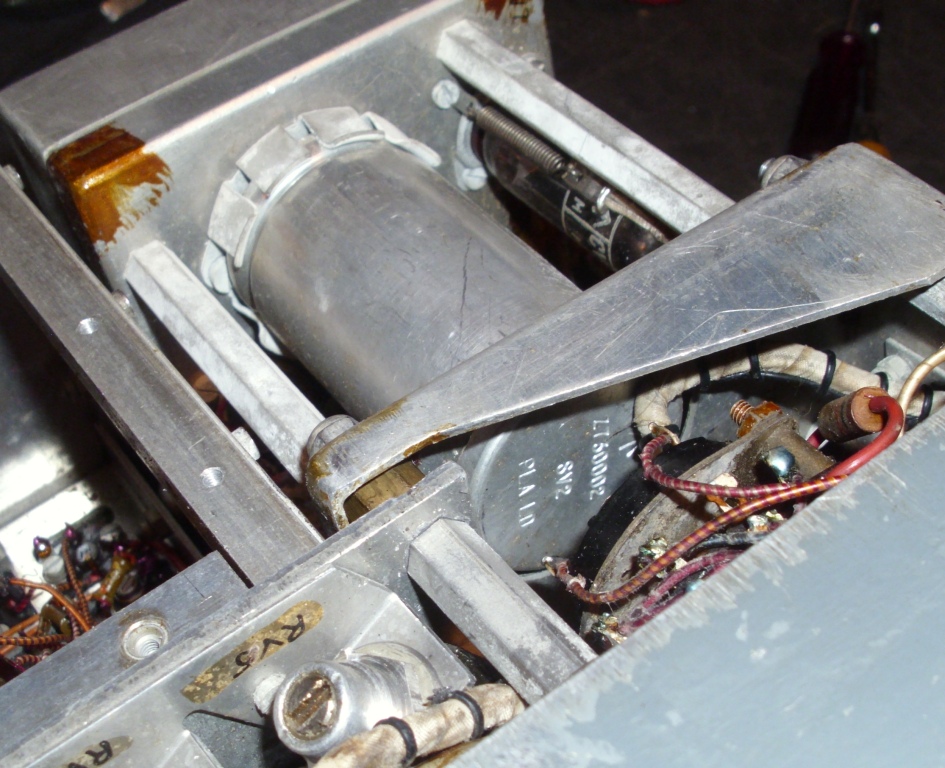At one stage, serious smoke erupted from the unit, initiating a panic turn off.
There is a series R and C circuit across the HT secondary. C49 had short
circuited, and burnt up R65, which released the large amount of smoke.
The fuse eventually blew, but not in time to save the resistor.
OSCILLATOR MODULE
The oscillator is functionally arranged as two sections. The RF oscillator
is contained inside a closed metal box. The AF oscillator is on the outside
of this box. There is also a regulator that produces 150 volts DC for the RF
oscillator.
The AF oscillator valve uses a tuned choke (L7 and C24) to produce the 1 Kcs
frequency. The waveform is available on two terminals on the front panel for
external use. The AF level is rectified and shown on the front panel meter.
The AM modulation depth is set by adjusting the screen voltage of the AF
oscillator using the SET MOD. front panel control. When the level is set
to the CAL mark on the meter, the modulation depth is 30%, but it can be
varied from about 10% to about 60% modulation. There is an internal preset
control to calibrate the 30% level. AM modulation can be used on all bands.
When switched to FM modulation, the front panel DEVIATION control can be
used to vary the FM from 0 to 40 Kcs. This control adjusts the amplitude
of the AF applied to the reactance valve in the RF oscillator module.
The reactance valve will act as a variable capacitance, and so vary the
frequency of the RF oscillator. However, the amount of capacitance required
to vary the RF oscillator frequency, is different for each RF frequency band,
and changes as you tune from end to end of the dial range. To keep the deviation
constant, two methods are used. There is a potentiometer ganged to the RF
frequency tuning control. As the frequency is changed from one end of the
dial to the other, the potentiometer adjusts the AF amplitude to keep the
deviation constant for that band. Secondly, there is a preset for each band,
to set the deviation amplitude for each particular band. The FM modulation can
only be used on the four bands above 2 Mcs.
The RF oscillator uses an RF transformer to couple the plate to the grid,
and a tuning capacitor to adjust the frequency. On the lower 3 bands,
a dual gang tuning capacitor is used. On the upper 4 bands, only 1 gang
is used, and the reactance valve is used in addition, but fixed for
AM modulation, and with AF applied for FM modulation. The RF oscillator
is coupled to a buffer, with a gain of approximately one. This then goes
to the output amplifier valve, with adjustable gain, controlled by the
screen supply variable from the SET CAR. front panel control, to set the
output level. This control is used to set the amplitude to the CAL mark
on the meter. AF is also applied to the screen to produce the AM modulation.
The RF then leaves the oscillator box though a fixed connector, and enters
the front panel attenuators. The RF amplitude is sampled at this point,
and rectified for indication on the front panel meter.
The attenuator consists of three parts. The first part is a “coarse” resistive
divider, with 5 positions, that produces 10 dB reduction at each position.
The second attenuator is a “fine” resistive divider, with 11 positions,
that provides 2 dB reduction at each position. The third attenuator is
external to the instrument, and is in the RF output cable. This is really
a terminator (TERMINATING UNIT No.3), and provides 75 ohm output or 7.5 ohm
output. The attenuators are labeled with a voltage scale (in black) and a
dB scale (in red). Using the black scale, the bottom attenuator control
can be set from 1 to 10 microvolts. The top attenuator, can then select
X1, X10, X100, X1000, and X10000. You have to do a mental calculation to
understand that this means that the output level is 1-10, then 10-100,
then 100-1000 microvolts. Then the next position is 1-10, then 10-100
millivolts. Using the alternative red scale, the bottom attenuator control
can be set from 0 to 20 dB in 2 dB steps. The top attenuator, can then
select 0, 20, 40, 60 and 80 dB. These can be added together to give a
100 dB range, but relative to what? It means that with no attenuation,
the output level is +100 dB greater than 1 microvolt. This is backwards
thinking from the way I use attenuators. I normally start with 0 dB as maximum
output, and then work down in negative dB steps. I found this dB scale
slightly confusing. It took some getting used to. I had to always remember
that with both knobs fully clockwise, there was maximum output. I gave up
trying to use dB, and only used the voltage scales. |
